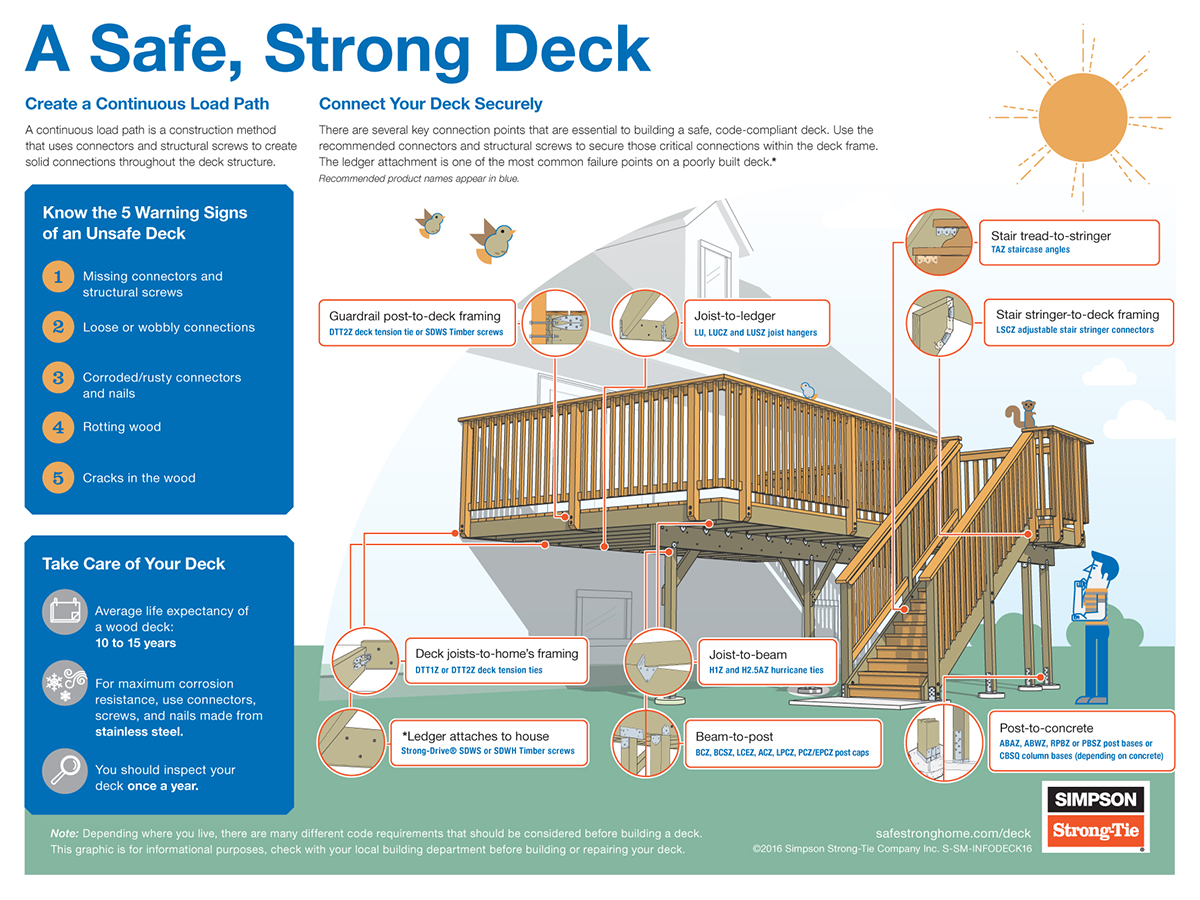Decks as Living Space: Your Deck is an Extension of your Living Space
30 Nov 2018 - Post By Matt Walsh
Enjoy the outdoors on your deck- Safely! Here are a few tips:
Now that the weather is warmer and you’re spending more time outdoors, it’s the perfect time to check that your deck is ready for outdoor entertaining. Just as you take your car in for regular maintenance to avoid bigger problems, a little deck maintenance goes a long way to ensure your peace of mind and to give your deck a longer life. Here are four tips to keep in mind as you prepare to enjoy your backyard oasis:
1. Inspect your deck every year.
Ideally, you should inspect your deck each year by going underneath it to make sure posts, beams, joists, deck boards, railings, fasteners, and connectors are all in good shape, and nothing is unstable. “The ledger connection is where the deck connects to the house. It is one of the most common failure points on a poorly built deck. It’s very important to use structural screws rather than nails to secure your deck ledger board to your home,” says David Finkenbinder, a branch engineer with Simpson Strong-Tie.

2. Build your deck right
Like a house, a deck should be designed to support the weight it will need to carry — think people and furniture, as well as the forces of Mother Nature, such as wind and snow. A safe deck needs load-tested, structural connectors and fasteners throughout the entire structure, spanning from the house to the posts in the ground. Your local county building department or a licensed contractor are both great resources to check that your outdoor structures are up to code. If you’re a DIYer, you can also check out the DCA 6 – Prescriptive Residential Deck Construction Guide.
3. Combat Corrosion
Decks — and the metal connectors that keep them connected and safe — are exposed to the elements. Over time, metal connectors, screws, and nails can corrode and weaken the structure of your deck. When choosing connectors, take into account where you live, and how weather and the environment may affect your deck. In many cases, connectors with a zinc galvanized coating and hot-dip galvanized fasteners provide adequate corrosion resistance. If you live along the coast or near bodies of water, it is recommended that you use stainless-steel connectors and fasteners.
4. Maintain for beauty and safety.
Just like other parts of your home, regular maintenance is needed. You should keep your deck clean from debris, and every deck should be cleaned once a year. If needed, you can apply a water-repellant sealant or stain.
“Wood is a natural choice for outdoor living projects — it’s easy to work with, affordable and its beauty can’t be copied,” said Wood, Naturally’s Cees de Jager. “What you might not know is that wood products are responsible for lower air and water pollution, and have a lighter carbon footprint than other commonly used decking materials.”
Remember, no two decks are exactly alike. If you are unsure about the safety of your deck, consult a professional who can help inspect your deck, provide suggestions and let you know how much a project or repair should cost. Then, make sure to get out and enjoy your deck all summer long!
Myth: Mold is the only problem associated with water damage.
When water is present where it should not be, it can quickly cause a host of problems, including both structural and cosmetic damage. It can promote bacterial and viral growth, increasing the health risks in your home. Additionally, mold can begin to grow within 24 to 48 hours, depending on the nature of water intrusion. If you experience a water damage emergency in your home, it’s best to call a reputable disaster restoration professional who is skilled in dealing with water-related damages. They can help get your home back in order as quickly as possible, as well as help you avoid long-term problems in the future.